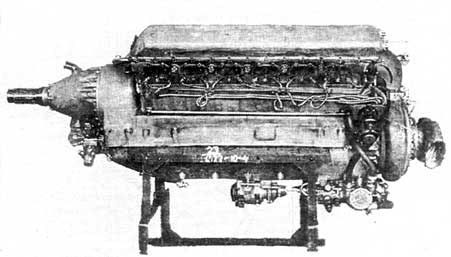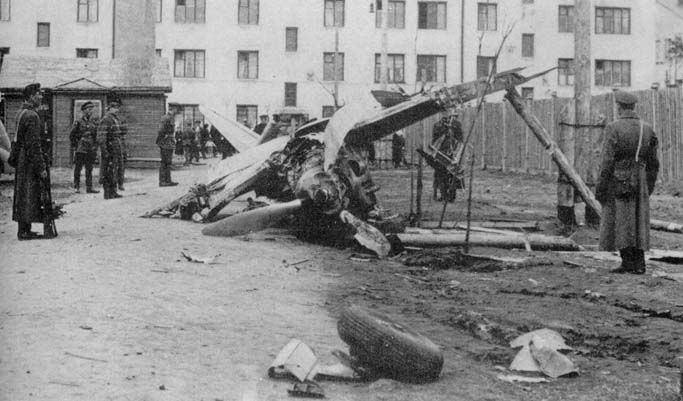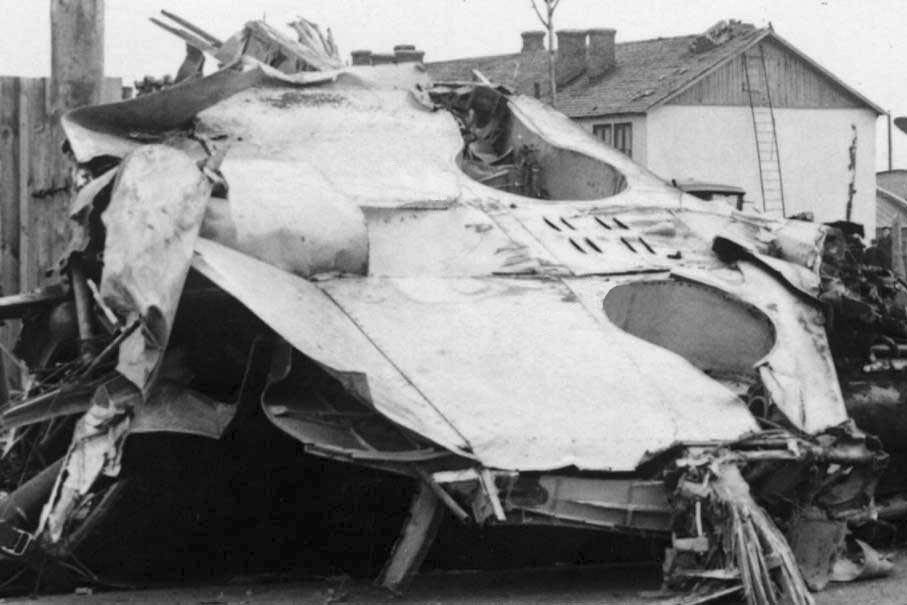last updated on June 18, 2005
file name: I-200mod.html
 |
In late 1940, the engine AM-37 was reasonably close to being operational.
It was the first engine on which the project X was based, and was able
to give about 200 hp more than the AM-35A.
The I-200 n.02 was refitted with this engine; there was a water intercooler
between the supercharger and the carburettor; the water was cooled by radiators
installed on the nose sides in the place formerly occupied by the oil radiators;
a new crescent-shaped oil radiator was installed under the nose.
The propeller was a VISh-61AP, with wider chord.
The armament was removed. |


|
The aircraft was first flown by the test pilot A.I. Zhukov.
During the tests, the engine performed poorly above an altitude of
4,000 m, so it was decided to send it again to the Zavod no.24 to be further
tuned.
However, this was not sufficient, because on May 7, 1941, test pilot
I.T. Ivashenko crashed during landing due to an engine failure; the aircraft
was damaged beyond repair.
An inquiry suggested that the accident was due to a pilot error, which
was attempting to switch the engine fuel flow from the wingroot tanks,
that were empty, to the fuselage tank at too late a point in the flight
routine to recover the engine.
Further experiments with the AM-37 engine were made on a MiG-3.
Thanks to [email protected] |
The IP-201 was an I-200 armed with 2 guns MP-3 (PTB-23) of 23 mm calibre,
with 60 rounds each, and two ShKAS 7,62 mm, with 750 rounds each.
The UBS 12,7 mm gun was removed to enlarge the fuselage tank capacity
to 195 l.
The MP-3 guns, projected by J.G. Taubin and M.N. Baburin of OKB-16
NKV, were installed on underwing pods. Two 100 kg bombs could be carried
too.
It was estimated that the speed should have decreased by 10-15 km/h
in comparison with the original I-200, but, if the AM-37 engine could be
installed, it should remain about 650 km/h.
Armament was tested on June 16, 1940 on a mockup aircraft, and
on 27 July a commission of NKAP, headed by B.N.Yurev, approved it. It was
noted
that the maximum speed reduction was likely about 25 km/h, greater than
was first estimated.
The NII-VVS, instead, stated on August 14 that the rate of fire of
MP-3 guns (300 rounds for minute) was unacceptably low, and proposed the
installation of BS 12,7 mm guns with 300 rounds each instead.
 |
However, the modification of I-200 no.03 into IP-201 was started during
late September 1940, when the aircraft returned from performing state trials
at NII-VVS, to Zavod 1.
Here we see the unmodified aircraft. |
On October 12, 1940, NKAP ordered NKV to study the possibility to placing
MP-3 guns instead of the ShKAS on the I-200 nose.
OKB-16 received a mockup aircraft, and studied the installation of
the guns. The conclusion was that both the gun and the syncronizer needed
significant modification to work. The installation of guns on the wings,
however, didn't require as much modification.
The mockup aircraft, equipped with a gun on its left wing, was trasmitted
to NKAP on October 28, with a technical relation.
 |
The OKB-16 modified the MP-3 into the MP-6, able to fire 600 rounds
for minute.
This arrangement was approved by the NKAP and of VVS, which ordered
the main combat aircrafts builders to develop underwing pods for MP-6 23
mm gun and AP 12,7 mm gun, both designed by Taubin and Baburin. |
Works on I-200 no.03 were completed with strenghtened and modified outer
wing panels, MP-6 guns on them and ShKAS replaced by 2 AP 12,7 mm machine
guns.
However, the guns caused visible flexing of the wings.
The works were suspended to allow the I-200 no.03 to fly, alongside
nos.01 and nos.02, to the Air Display of November 7, 1940 above Red Square
in Moscow.
After this, the work on no.03 was started again and completed by the
end of November.
On December 1, 1940, test pilot V.N.Gurskiy flew the aircraft, but
he had to made a forced landing damaging the aircraft, that was sent to
repair.
On March 1941 factory tests started again; they soon ceased, because
the MP-6 and AP guns failed to satisfy the high expectations reposed in
them and didn't enter service; Taubin and Baburin were shot for their failure.
Note: this page is widely based on the article of Arsenyev
at http://www.23ag.sp.mk.ua/html/mig_1.html




